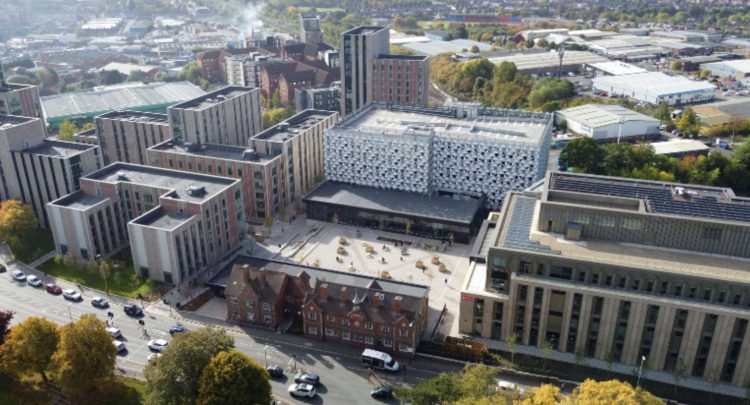A new £150m student village will be unveiled later today by the University of Leicester, a development which contains a “fitting tribute” to a former vice chancellor who passed away earlier this year.
A special event to mark the opening of the University of Leicester’s Freeman’s development, located on Welford Road, will take place today (Monday, October 24).

The regeneration project has seen derelict halls of residence and an open air car park transformed into a high-tech centre for teaching, working and living.
At its heart is the four-storey Sir Bob Burgess Building, named after the University’s former late Vice-Chancellor, which comprises two large lecture theatres, flexible teaching spaces and a state of the art space for staff to work, meet and relax.
The building is said to be a “fitting tribute” to Sir Bob, who presided over one of the University’s most successful periods between 1999 and 2014.
He passed away earlier this year, at the age of 74.
The site also includes accommodation for 1,200 students, a social hub including a food outlet and bar and a 555-space multi-storey car park. The project has also seen the sensitive refurbishment and extension of the Grade II-listed Freemen’s Cottages as the centrepiece of the scheme.
Freemen’s is powered by sustainable technologies, with the expectation more than 80,000 kWh of solar power will be generated each year.
Kerry Law, Deputy Vice-Chancellor (Professional Services), said: “Freemen’s is the realisation of years of careful planning to deliver the very highest quality environment for our students to live and learn in.
“We have been delighted with the positive reaction of both students and staff as they settle in to their new home, which extends our vibrant city campus.
“Freemen’s doesn’t only deliver first-class facilities for students and colleagues, but also provides benefits for the public, including pleasant open spaces and safer routes for pedestrians and cyclists,” she added.
“The regeneration of a tired site into a landmark new neighbourhood is something the University and city can be very proud of, as the University embarks on its second century.”




